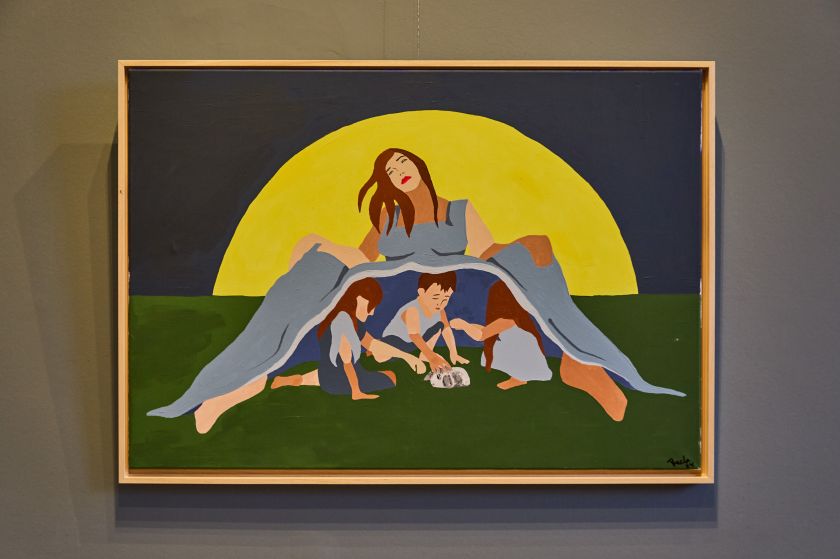Thecla Schaeffer on motherhood as both protest and power in art and creativity


As part of our Caregiving & Creativity theme, we speak with Thecla Schaeffer—an artist, former creative director, and single mother of three—about reclaiming space, rejecting outdated narratives, and creating art in the kitchen as an act of both resistance and liberation.
Thecla Schaeffer is no stranger to shaping cultural narratives. As the former creative force behind G-Star RAW and Tony’s Chocolonely and now an acclaimed visual artist, she has spent her career pushing boundaries.
However, her work has taken on a new, urgent power through the lens of motherhood—raw, complex, and deeply personal. In her latest series, CATTLE: Motherhood, she asks: How does motherhood both liberate and oppress? In this powerful Q&A, Thecla reflects on time, headspace, the myth of the solitary (male) artist, and why caregiving isn’t a creative limitation but a catalyst for a new kind of artistic voice.
How has motherhood influenced your creative process or career choices?
My art is infused with the anger and frustrations about the hypocritical expectations towards women and mothers. Motherhood gave me both the emotional rawness and the urgency to express myself. And age gave me the clarity that I don’t want to explain or justify that expression anymore. I want to create something that cannot be argued with – an unapologetic female narrative that simply exists and, through its boldness, asks to be seen and interpreted.



What’s been the biggest challenge in balancing creativity and caregiving?
The biggest challenges are time and headspace. Creativity asks for expansiveness, freedom, and time to try different things. Caregiving is the exact opposite. It’s constant presence, vigilance, and giving. But it is also simply a practical challenge. You cannot leave the kids alone.
That is why I decided to create my art in the kitchen, literally. This is where I can be an artist and a mother. The process is part of the art. Where and how I create my art is also a protest against – and even a liberation from – the cultural conception of the artist sitting solitary in his atelier, doing nothing but pondering his next work of art.
Have you felt pressure to ‘do it all,’ and how do you navigate that?
Absolutely. But I think the more honest question is: Is it pressure, or is it reality? Because very often, women actually do have to do it all. And then we’re told it’s just “in our heads”, that the pressure is self-imposed. That’s gaslighting. Society lets us believe that we’re not good at dealing with the pressure, where, in fact, women work more hours a day than men, if you take unpaid labour into account. Research says even as much as eight full-time weeks more work a year more!
What changes would you like to see in the creative industry to better support mothers?
First of all, representation. Not just as a checkbox but because it is important that women’s stories are seen and heard. Even to this day, female artists are grossly underrepresented in museums and galleries. With the majority of art students being women, one needs to critically ask these galleries: why?
We need curators and institutions to stop seeing motherhood as a limitation. It’s a source of strength, complexity, and creativity, and the stories of women and mothers are valuable contributions to the art world.



